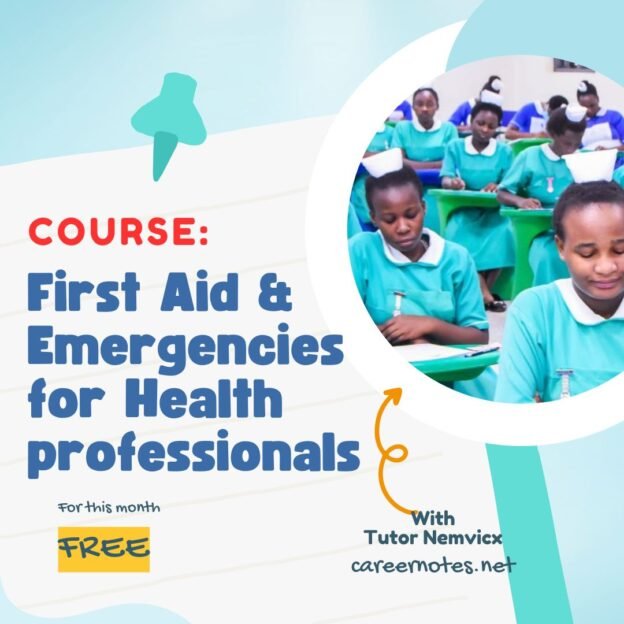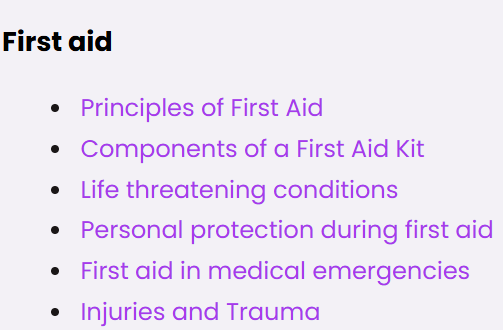🩺 First Aid and Emergencies for Health Professionals

About Course
Course: First Aid and Emergencies for Health Professionals

Photo: the curriculum expectations
This course provides comprehensive training in first aid and emergency care tailored specifically for nurses, midwives, and other health professionals.
It equips learners with essential knowledge and practical skills to respond effectively to a wide range of medical emergencies in both clinical and community settings.
Covering fundamental principles such as patient assessment, airway management, bleeding control, shock management, fracture stabilization, and emergency response protocols, the course emphasizes evidence-based practices aligned with national and international standards.
Students will explore both common and life-threatening scenarios, including cardiac arrest, respiratory distress, trauma, shock, poisoning, burns, and obstetric emergencies.
The course also addresses emergency preparedness, triage, and the psychological aspects of emergency care.
By the end of the course, participants will be confident in providing timely, accurate, and life-saving interventions within the scope of their professional roles.
Why Take This Course?
By the end of this course, you will be confident in:
-
Delivering life-saving care in critical moments
-
Understanding emergency protocols across diverse healthcare settings
-
Acting quickly, professionally, and safely in emergencies
-
Enhancing your readiness as a health worker on the frontline
Course Content
Topic 1: Introduction to First Aid and Emergencies
-
Lesson 1.1 Introduction to First Aid: Becoming a First Aider
-
Lesson 1.2: Protection from Infection During First Aid
-
Lesson 1.3: First Aid Kit (Materials and gadgets)
Topic 2: Handling a Casualty & Managing Incidents
Topic 3: Emergency Life-support skills and techniques
Topic 4: Circulatory and blood-related emergencies
Topic 5: The respiratory system and its emergencies
Topic 6: Central Nervous System (CNS) Emergencies
Topic 7: Gastrointestinal (GIT) emergencies
Topic 8: Musculoskeltal emergencies
Topic 9: Skin, Soft Tissue and Environmental Emergencies
Topic 10: Foreign Bodies
Topic 11: Medical diseases of emergency
Student Ratings & Reviews

